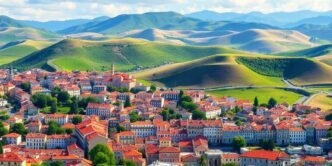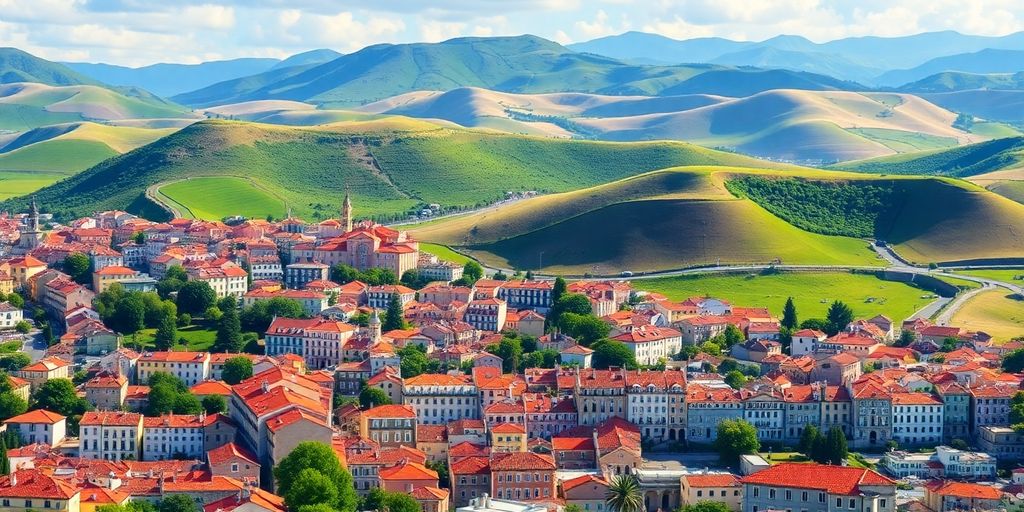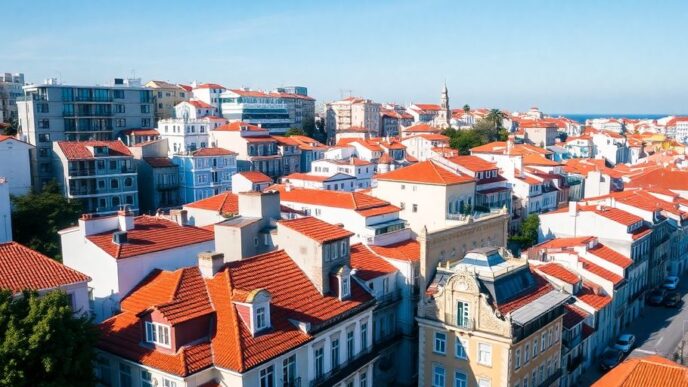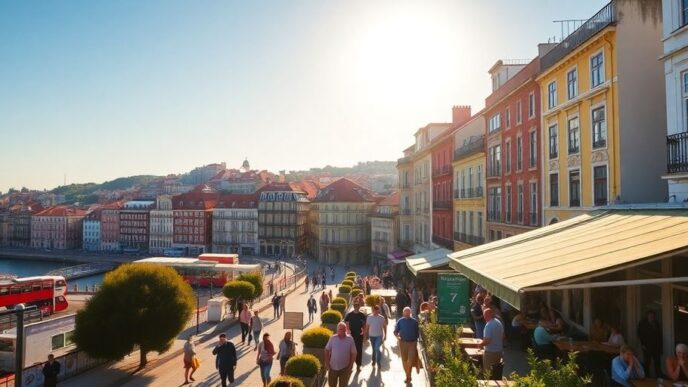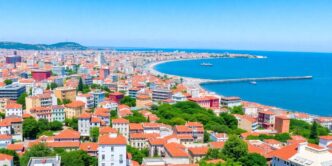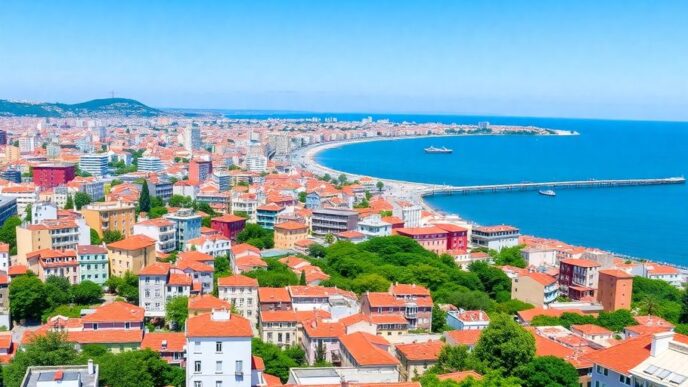Portugal’s GDP per capita has been a topic of interest for many economists and policymakers. As we look towards 2025, it’s important to understand the factors that have shaped its current state and what the future might hold. From historical trends to modern-day challenges, Portugal’s economic journey offers insights into its growth patterns and potential future directions.
Historical Overview of Portugal GDP Per Capit
Economic Milestones and Shifts
Portugal’s economic journey over the decades has been a rollercoaster. The country saw significant growth after joining the EU in 1986, which opened doors to new markets and increased investment. This was a pivotal moment that set the stage for modern economic development. However, the financial crisis of 2008 hit hard, leading to a recession and a bailout in 2011. Recovery was slow but steady, with GDP per capita gradually improving as the country implemented austerity measures and structural reforms.
Impact of Global Events on GDP
Global events have played a crucial role in shaping Portugal’s economic landscape. The 2008 financial crisis was a major blow, but the subsequent recovery period showcased the resilience of the Portuguese economy. More recently, the COVID-19 pandemic presented new challenges, disrupting tourism—a key sector—and causing GDP to shrink. Despite these setbacks, Portugal has shown adaptability, slowly bouncing back as global travel and trade resumed.
Comparative Analysis with EU Nations
When compared to other EU countries, Portugal’s GDP per capita has traditionally been on the lower end. However, the gap has been narrowing. While countries like Germany and France remain ahead, Portugal has made significant strides in catching up. The focus on technology, exports, and tourism has been instrumental in boosting its economic standing within the EU.
Portugal’s journey through economic ups and downs highlights a nation that, despite facing significant challenges, continues to strive for growth and improvement in its GDP per capita. The resilience and adaptability of its economy are testaments to its ongoing efforts to align more closely with the economic powerhouses of Europe.
In the face of economic challenges, worker discontent and the need for better compensation have become increasingly apparent, with protests highlighting the demand for higher wages and pensions.

Current Economic Landscape in Portugal
Sectoral Contributions to GDP
Portugal’s economy is a tapestry of various sectors, each weaving its own pattern into the nation’s GDP. The service sector, particularly tourism, plays a massive role, contributing nearly 70% to the GDP. Manufacturing and agriculture, while not as dominant, are vital, with manufacturing focusing on textiles, footwear, and automotive parts. The agricultural sector, though small, is known for its wine and olive oil production. Here’s a quick snapshot:
| Sector | Contribution to GDP (%) |
|---|---|
| Services | 70 |
| Manufacturing | 20 |
| Agriculture | 10 |
Role of Tourism and Exports
Tourism is like the heartbeat of Portugal’s economy. It’s not just about the beaches and historic sites; it’s a significant employment driver. In recent years, Portugal has become a hotspot for digital nomads, thanks to tax breaks reintroduced to lure skilled workers. On the export front, Portugal is making strides with goods like cork, textiles, and machinery, with Spain being a crucial trade partner. This robust export sector helps balance the trade deficit, although there’s still ground to cover.
Challenges in Employment and Wages
Despite the economic progress, Portugal faces hurdles with employment and wages. Unemployment rates have stabilized, yet wage growth hasn’t kept pace with inflation, impacting purchasing power. Housing costs have surged, making life tougher for many. Social benefits are often seen as inadequate, leaving those at risk of exclusion in a bind.
The economic landscape in Portugal is a blend of opportunities and challenges, where growth sectors like tourism and exports shine brightly, but social issues like wage stagnation and housing affordability cast long shadows. The country continues to navigate these complexities as it strives for a balanced and inclusive economy.
Forecasting Portugal GDP Per Capita for 2025
Predicted Economic Growth Trends
Portugal’s economy is on a path to steady growth, with GDP projected to rise by 1.9% in 2025. This uptick is expected to be driven by a combination of factors, including increased domestic demand and a robust investment climate. The tourism sector, which has been a significant contributor, is anticipated to stabilize after years of exceptional growth, paving the way for other sectors to step up. Public investment is also expected to see a boost, thanks to the influx of European funds under the Recovery and Resilience Plan.
Influence of Government Policies
The Portuguese government is implementing several policy measures to sustain economic growth. Key among these is the reduction in corporate tax rates, aimed at stimulating business investment. The government is also focusing on enhancing public investment, particularly in infrastructure, to create a more conducive environment for economic activities. Additionally, labor market reforms are being introduced to improve employment conditions, which should, in turn, boost consumer spending.
Potential Risks and Opportunities
While the outlook is generally positive, there are potential risks that could impact economic growth. These include global economic uncertainties and potential disruptions in trade relations. On the upside, Portugal has opportunities to capitalize on its growing sectors, such as technology and renewable energy, which could provide new avenues for economic expansion. The continuous improvement in financing conditions also presents an opportunity for businesses to expand and innovate.
Portugal’s economic forecast for 2025 is cautiously optimistic, with growth expected to be fueled by strategic investments and supportive government policies. However, vigilance is necessary to navigate potential challenges and seize emerging opportunities.
Social Implications of GDP Changes in Portugal
Poverty and Income Inequality
Portugal’s economic growth hasn’t fully translated into improved social conditions for everyone. Poverty levels have risen since the pandemic, and having a job isn’t always a ticket out of poverty. The number of homeless people has shot up, especially those without shelter. This situation highlights the fragile social fabric in Portugal. There’s a pressing need for the economic progress to be matched by social improvements, which, unfortunately, aren’t visible yet.
Urbanization and Demographic Shifts
Portugal’s population is aging, with a median age of 45 years, and urban areas are growing, now accounting for nearly 68% of the population. This shift brings challenges like increased demand for urban infrastructure and services. The rural areas, meanwhile, face depopulation, which can lead to a decline in local economies. Balancing growth between urban and rural areas is crucial to ensure sustainable development.
Impact on Quality of Life
Despite economic gains, many Portuguese struggle with rising living costs, particularly housing. The house price index has climbed, outpacing wage growth, which strains household budgets. Social benefits are often insufficient to support those in need, impacting the overall quality of life. Addressing these issues is vital to ensure that economic growth leads to real improvements in living standards for all citizens.
Economic growth should be a tool for enhancing the lives of all citizens, but in Portugal, the benefits are not yet evenly distributed. Bridging this gap is essential for a more equitable society.
Portugal’s Position in the Global Economy
Trade Relations and Partnerships
Portugal has carved out a significant place for itself in the global market through robust trade relations. Spain is its top trading partner, both for imports and exports. This close economic relationship is vital, with Spain accounting for a substantial portion of Portugal’s trade activity. Beyond Spain, Portugal engages actively with other EU nations, ensuring a steady flow of goods and services across its borders. However, the trade balance remains a challenge, with imports exceeding exports by a notable margin. This deficit highlights the need for Portugal to diversify its trade portfolio and seek new markets.
Investment Opportunities
Portugal presents numerous opportunities for investors, particularly in sectors like renewable energy, technology, and tourism. The country’s strategic location in Europe, coupled with its competitive labor costs, makes it an attractive destination for foreign direct investment. The government has been proactive in creating a favorable business environment, offering incentives to attract international businesses. As the global economy evolves, Portugal continues to position itself as a hub for innovation and growth, inviting investors to explore its untapped potential.
Comparative GDP Analysis Globally
While Portugal’s GDP per capita is lower than some of its Western European counterparts, it has shown consistent growth over the years. This growth is driven by a mix of traditional industries and emerging sectors. When compared globally, Portugal’s economy is relatively small, but its strategic initiatives and economic reforms are helping it punch above its weight. The focus on sustainable practices and technological advancements is expected to enhance its global GDP standing in the coming years.
Portugal’s economic journey is a testament to resilience and adaptability, navigating through challenges and leveraging opportunities to secure its place in the global economy.
Strategies for Enhancing Portugal GDP Per Capita
Innovation and Technological Advancements
In the quest to boost GDP per capita, Portugal must focus on innovation and technology. Encouraging startups and tech companies through incentives can create a vibrant ecosystem. This involves not just financial backing but also fostering a culture of innovation in education and business.
- Government Grants: Offer financial support to startups and tech firms.
- Research and Development (R&D) Investments: Increase funding for R&D in universities and private sectors.
- Tech Hubs: Develop tech hubs in major cities to attract global talent.
Education and Workforce Development
Education is key to economic growth. Portugal needs to improve its education system to better align with market needs, focusing on skills that are in demand.
- Curriculum Updates: Align educational programs with current and future job market demands.
- Vocational Training: Expand vocational training to equip the workforce with practical skills.
- Lifelong Learning: Encourage continuous education and skill development.
Sustainable Economic Practices
Sustainability is not just a trend but a necessity for long-term economic health. Portugal can lead by example in adopting sustainable practices.
- Renewable Energy: Invest in renewable energy sources to reduce dependency on imports.
- Circular Economy: Promote recycling and waste reduction initiatives.
- Green Infrastructure: Develop infrastructure projects that prioritize environmental conservation.
Portugal’s economic growth hinges on strategic innovations, education reforms, and sustainable practices. By focusing on these areas, the nation can improve its GDP per capita and ensure a prosperous future for its citizens.
In particular, Portugal ranks 18th in EU salary standings, highlighting the need for strategic investments in higher-value industries and workforce skills to boost economic growth.
Conclusion
As we look towards 2025, Portugal’s GDP per capita is a mixed bag of challenges and opportunities. The country’s economy is showing signs of growth, with investments and exports playing a big role. But, it’s not all sunshine and rainbows. Inflation is still a concern, and the social issues, like poverty and unemployment, are tough nuts to crack. The government has its work cut out for it, balancing economic growth with social welfare. If they can pull it off, Portugal might just see a brighter future. But for now, it’s a waiting game to see how things unfold.
Frequently Asked Questions
What is GDP per capita?
GDP per capita is the total economic output of a country divided by its population. It gives an average economic productivity per person.
How does Portugal’s GDP per capita compare to other countries?
Portugal’s GDP per capita is lower than many Western European countries but higher than several Eastern European nations.
Why is GDP per capita important?
It helps to measure the economic well-being of a country’s citizens and compare living standards internationally.
What factors influence GDP per capita in Portugal?
Several factors affect it, including tourism, exports, government policies, and global economic conditions.
How has Portugal’s GDP per capita changed over the years?
Portugal’s GDP per capita has seen ups and downs due to various economic challenges and global events.
What can be done to increase Portugal’s GDP per capita?
Improving education, investing in technology, and enhancing trade relations can help boost GDP per capita.

